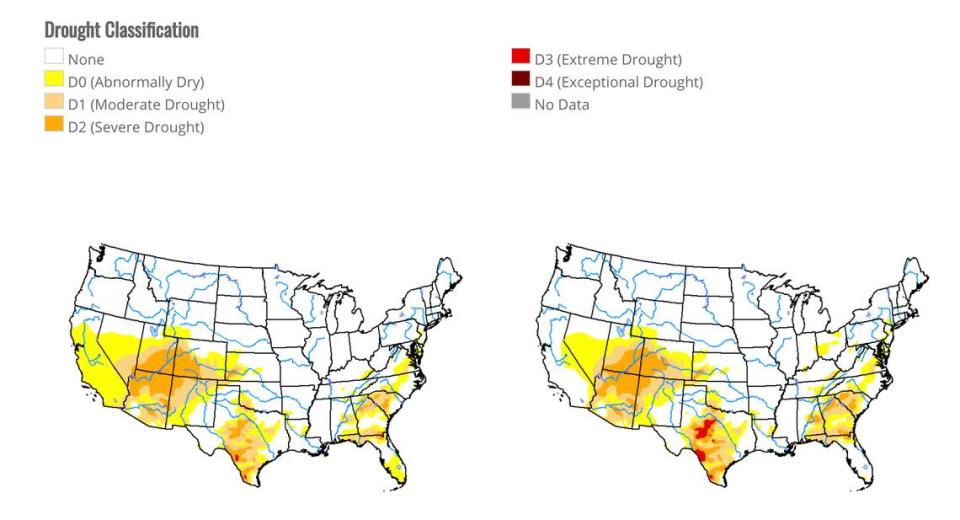More drought coming? Most of California once again ‘abnormally dry,’ monitor shows
Newly released data might have Californians once again praying for rain.
Almost all of the state has fallen into “abnormally dry” conditions, except for the furthest northern reaches of California, according to a U.S. Drought Monitor map released Nov. 12.
Only about 18 percent of the state has avoided dry or drought conditions entirely, while roughly 81 percent of California is “abnormally dry” and nearly 4 percent has slipped into “moderate drought,” the U.S. Drought Monitor shows.
That’s a marked shift from just days ago: Last week, 82 percent of California was experiencing no dry or drought conditions, and only 18 percent of the state was “abnormally dry.” And three months ago, none of the state was in drought at all, according to the U.S. Drought Monitor.
“While reservoirs remain high, numerous indicators support dryness, including 60-day precipitation deficits, high evaporative demand, and vegetation health,” officials said in a summary of the Nov. 12 findings.

Dry or drought conditions are also afflicting Utah, Nevada, Arizona and New Mexico.
Drought doesn’t just mean less drinking water — it also hurts agriculture, energy production, public health and can fuel wildfires, according to the U.S. Drought Monitor.
The U.S. Drought Monitor is a partnership of the National Drought Mitigation Center at the University of Nebraska-Lincoln, the U.S. Department of Agriculture and the National Oceanic and Atmospheric Administration.
Definitions of drought vary from person to person, and even from expert to expert.
“There are 200 different definitions of drought,” climatologist Bill Patzert said, according to the Los Angeles Times. “If you’re a firefighter with no rain in the month of October, and there are strong Diablo and Santa Ana winds, it’s a drought.”
Heavy winter precipitation that pulled California from drought conditions earlier this year left some wondering if the 2019 wildfire season would be less severe.
California winter rains used to ward off wildfires — but not anymore, new study finds
But even without drought conditions, large blazes spread last month in both Northern and Southern California, forcing mass evacuations in wine country north of the San Francisco Bay Area and threatening the homes of celebrities like LeBron James around Los Angeles.
One expert said three factors — delayed rainfall, strong seasonal wind and climate change — are to blame for this year’s fires, The New York Times reported in October.
“It is fair to say that everything that’s occurring today is about 3 degrees Fahrenheit warmer than it would have been if the same Santa Ana wind event were happening 100 years ago and that’s important,” said Park Williams, a professor at Lamont-Doherty Earth Observatory at Columbia University, according to The New York Times.
Might rain come soon?
There’s a chance some parts of the state could get wet next week.
“NBC Bay Area Meteorologist Kari Hall said Thursday a storm system could soak parts of the Sierra Nevada and Southern California during the middle portion of next week, but it’s not expected to bring rain to the Bay Area,” the San Francisco TV station reported.

